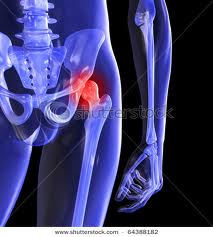Tags
Cobalt chrome, Cobalt poisoning, DePuy, Food & Drug Administration, Hip Replacement, Johnson & Johnson, Metal Hypersensitity, Metal Ion Hypersensitivity, Metal sensitivity, Metal-on-Metal components, Metal-on-Metal DePuy hip device, metallosis, MoM Hips, New York TImes
Metal-on-Metal Hip Implants: Another Medical Innovation That Didn’t Deliver

Newer isn’t always better when it comes to medical products, according to a report from The New York Times. Too often, once they are on the market, it becomes clear that “innovative” drugs and devices provide no more benefits and pose far greater risks compared to the tried-and-true products they were meant to replace.
Metal-on-metal hip implants are the most recent example of this phenomenon. When they first came on the market, the Times says, they were touted as a huge advancement over older hip replacement designs that used both plastic and metal. All-metal hip implants were quickly adopted by surgeons without convincing evidence that they were better or even as good as existing options. Sadly, as anyone who reads this blog knows, metal-on-metal hips did not deliver as promised. It is now known that such devices can shed dangerous metallic debris through wear, leading to tissue damage, premature device failure, the need for revision surgery, and even long-term health problems.
Last year, DePuy Orthopaedics, a division of Johnson & Johnson, recalled its DePuy ASR hip implant because of such problems. The recall came after data from the U.K. indicated the early failure rate with the ASR hip replacement device was around 13 percent. Since then, DePuy has been named in hundreds of lawsuits filed by people who claim they were victims of the defective implant. DePuy is also facing lawsuits over its Pinnacle hip implant, another metal-on-metal device that is similar in design to the ASR implant.
The devices’ problems have the attention of the U.S. Food & Drug Administration (FDA), which last month asked DePuy Orthopaedics and 20 other manufacturers of metal-on-metal hip implants to conduct safety studies aimed at determining if these devices are shedding dangerous amounts of metallic debris in patients. They have also been told to determine how often their metal-on-metal hip implants fail prematurely.
Often it turns out that disappointing medical innovations weren’t tested as thoroughly as they could have been, and metal hip implants are no exception. According to The New York Times, FDA rules didn’t require that most of these devices undergo clinical trials before they were brought to market. Instead, they were tested in labs on machines that simulate millions of steps to study the forces exerted by years of motion. Those tests didn’t find any evidence of the horrific problems that so many patients with all-metal hips are now experiencing. Experts now believe that was the result of tests based on idealized conditions, not on what would happen in the real world, the Times said.
Now patients are paying the price for those poorly designed tests. According to the Times, it’s estimated that 500,000 patients in the U.S. may have received metal-on-metal hips, and it’s very likely that tens of thousands will be forced to undergo painful revision surgery due to early failures. More lawsuits are also expected, the Times said, and some experts believe the litigation surrounding “all-metal hips may emerge as the largest product liability cases of this decade.”
Technorati Tags: Chrome Poisoning , Cobalt Chrome, Cobalt Poisoning, Hip Replacement, Hip Resurfacing, Hip Revision, Johnson & Johnson, Metal Hypersensitity, Metal Ions, Metal on Metal Hips, MoM hips, Total Hip Replacement, Metallosis
Related articles
- Veterans are Put through Another War – Hip Recall (earlsview.com)
- Another Legal Victory for Victims With Recalled DePuy ASR Hip Replacement Implants (earlsview.com)
- ‘Metal on metal’ hip implants leave some recipients in pain, at risk (earlsview.com)
- Techniques In Implementing A Hip Replacement Operation (earlsview.com)
